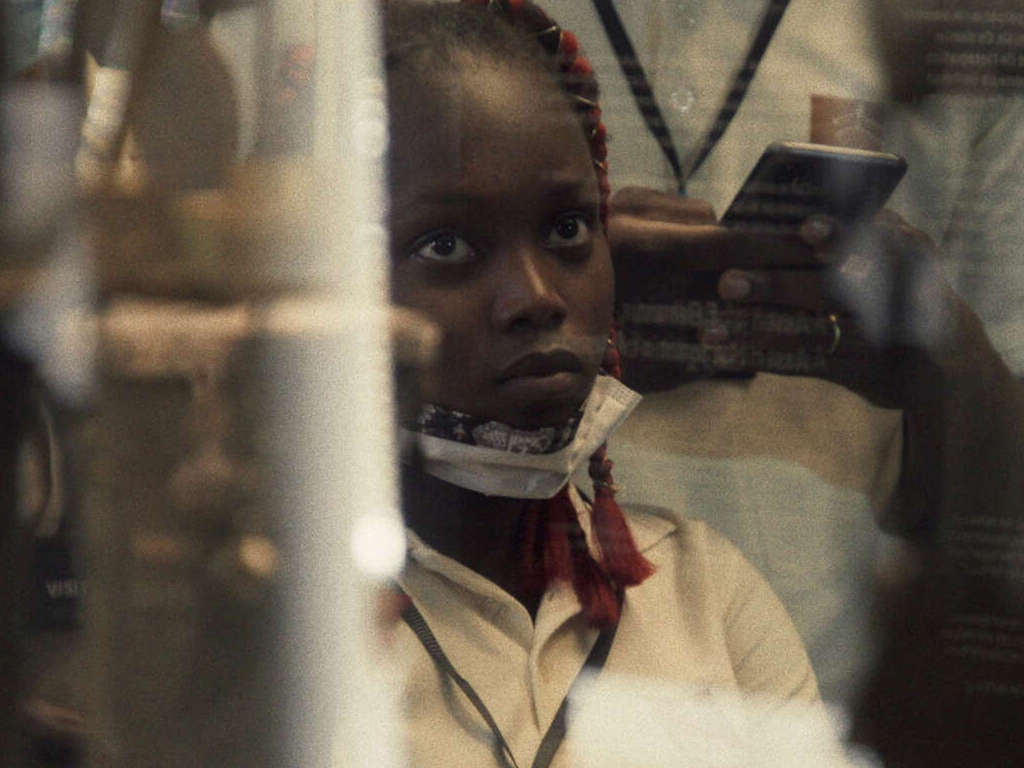
November, 2021. Twenty-six royal treasures of the Kingdom of Dahomey are about to leave Paris to return to their country of origin, the present-day Republic of Benin. Along with thousands of others, these artifacts were plundered by French colonial troops in 1892. But what attitude to adopt to these ancestors’ homecoming in a country that had to forge ahead in their absence? While the soul of the artifacts is freed, debate rages among students of the University of Abomey-Calavi.
EN
“When I began filming, I was so steeped in the feature I had in mind that my approach to reality was suffused in lyricism. I was looking at what I had already dreamed. The decision to film the treasures like characters with their own perspective and subjectivity enabled Joséphine and I to maintain a strong focus while grasping other dimensions that I wanted to make palpable.
To my mind, the historical dimension of the moment had a mythical dimension that I wanted to transcribe through the manner of filming. To bring out the weight, density and texture of what was going on. Often, reality produces pictures that are far more striking than anything fiction generates. I was astonished by the highly technical process that looked like a funeral ceremony, with a tempo set by the crating-up of each artifact to the sound of drills and construction site banging. We had indeed entered the era of museums’ disquiet. The atmosphere was very solemn; you felt every passing second. History was changing direction; something was being reversed. Sometimes, everyday people turn into mythological characters or archetypes that must be acknowledged and made sublime. That is the case with Calixte Biah, the curator brought in by the Beninese government to fly with the treasures from Quai Branly to Cotonou.
Before coming up with the idea of having the artifacts talk, I wanted first of all to make their silence, which we recreated in sound editing and mixing with Nicolas Becker and Cyril Holtz, as audible as possible. It seemed to me to be the most eloquent way of restoring their power while evoking their secret, opaque and inviolable aspects. The particular sequence when the artifacts are installed in the exhibition space at the presidential palace was fine-tuned and rewritten in the editing suite. Back on Beninese soil, the artifacts open up to a new dimension of themselves. Through the observations on their «condition» read out by Calixte, a part of their history is restored through the marks of time. At the same time, the people looking at them and after them, and talking to them, perhaps also rediscover part of themselves.”
Mati Diop1
- 1Mati Diop, cited in the interview with Mati Diop in the press file for the Berlinale 2024.

